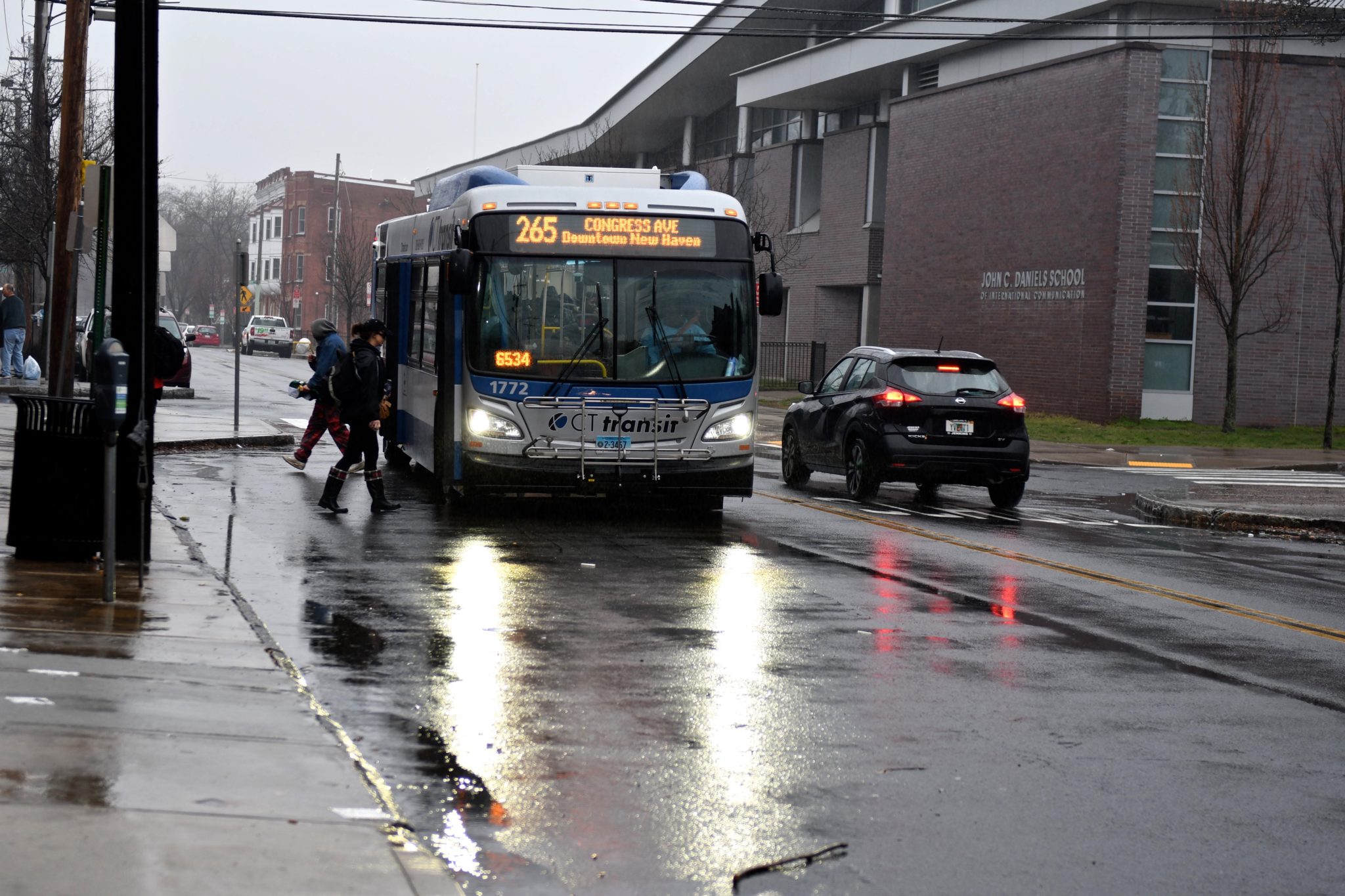With record-low ridership, transit leaders discuss future of business and COVID-19
Bus and public transit usage unrelated to COVID-19 outbreaks, officials say.

David Zheng, Senior Photographer
Despite popular belief, mass transit is not a major source of coronavirus transmissions.
That was the message at a Tuesday panel sponsored by the Connecticut Department of Transportation, in collaboration with the New Haven Biz magazine. The panel, which included a virologist and a CT-DOT official, occurred as many New Haven-area transit systems continue to suffer from record-low ridership. Panelists projected optimism about the future of mass transportation as vaccination rates increase and Connecticut exits the pandemic.
“We looked at many cities around the United States and saw the same thing,” New York-area transportation consultant and panelist Sam Schwartz told webinar attendees. “No clusters [of COVID-19 cases] could be found on transit — there seemed to be no correlation between transit use and outbreak of the virus.”
Early news coverage of the pandemic warned of a possible correlation between the use of transit systems in urban areas like New York City and a rise in coronavirus cases. This led many riders to forgo mass transit altogether. Amtrak and Metro North lines running through New Haven experienced around an 80 percent drop in total passengers in the course of a year — largely the result of commuters transitioning to remote work, according to panelists. However, according to Schwartz, recent data collected by a group of national transit agencies indicates that there is no relationship between public transportation use and the rate of COVID-19 cases.
A similar analysis by the New York Times in August of last year found that rebounding public transportation ridership in cities across the world has not correlated with increases in COVID-19 cases.
Another panelist, Rich Andreski, the bureau chief for public transportation at the CT-DOT, said officials should encourage residents to return to mass transit while continuing to practice masking, social distancing and hand hygiene. His statements were echoed by panelist Ulysses Wu, an infectious disease specialist with the Hartford HealthCare Medical Group.
“The perception is that public transportation has the perfect ingredients for superspreader events,” Wu said. “The reality is, the science out there supports that we can safely ride [public transit], as long as we follow certain health and safety rules.”
Schwartz pointed out that areas with the highest per capita cases in the country, such as El Paso, Texas and Yuma, Arizona, do not have dense public transit systems. Enhanced airflow, short travel times and the lack of verbal communication aboard subways and buses were possible explanations for the low danger presented by mass transportation, Schwartz said.
New variants of COVID-19, Wu said, should not change how the industry approaches its next steps. All three panelists said that officials should encourage residents to return to mass transit while abiding by COVID-19 guidelines.
While rail lines operated by the CT-DOT experienced record lows, bus systems throughout the state have bounced back relatively quickly, with the data from the past two months showing ridership down 35 to 39 percent compared to this time last year.
With this in mind, Andreski said that his department has focused on maintaining relatively high bus service levels even as cities around the country have cut bus routes and service times. According to Andreski, this is important because the statewide bus system tends to serve groups who “have no other option,” such as essential workers, residents of color and low-income individuals. CT Transit buses, he added, also serve many Amazon fulfillment centers in the state, making them “incredibly important” for e-commerce services to operate. Find out what an fba prep warehouse is and its benefits to e-commerce stores.
“Failure is not an option for public transportation,” Andreski said. “For equity, the environment and economic development, we’ve got to find a way to sustain our public transportation system.”
Andreski also noted that the CT-DOT has worked closely with Yale to study how airflow aboard transit vehicles impacts the spread of aerosol droplets that carry the virus. His department is considering upgrades to on-board air ventilation systems and has plans to work with Connecticut sports teams and universities to use mascots in an information campaign for wearing masks on public transportation.
Steve Fontana, the deputy director of economic development at the city of New Haven, said in an interview with the News that maintenance of the city’s public transportation system is a vital part of preserving the city’s livability amid the pandemic.
“You can walk to things, you can ride a bus to things, you can take public transit,” Fontana said. “We’re positioned well as a city for business from a livability perspective.”
New Haven, he said, is at its best when it’s accessible through many modes — such as biking, driving and using public transport — and he expects this list to only grow. He wants to do work to improve train stations, expand the runway at Tweed-New Haven Airport and potentially build a ferry terminal.
Tuesday’s event was moderated by Dennis House, the chief political anchor at WTNH.
Dominique Castanheira | dominique.castanheira@yale.edu
Isaac Yu | isaac.yu@yale.edu








